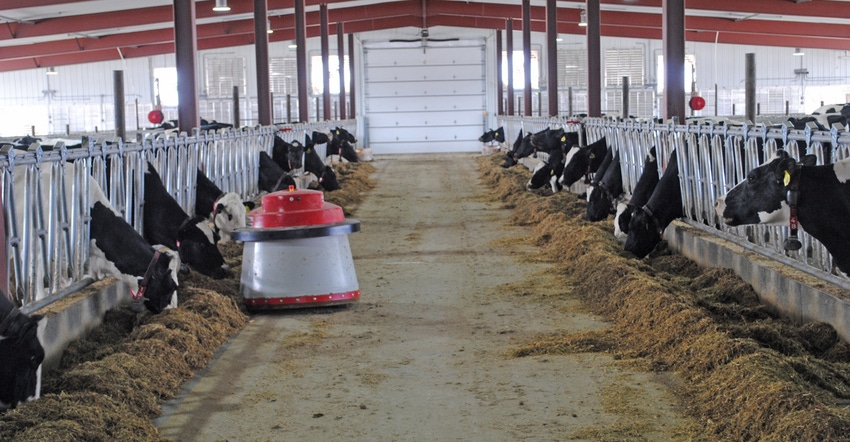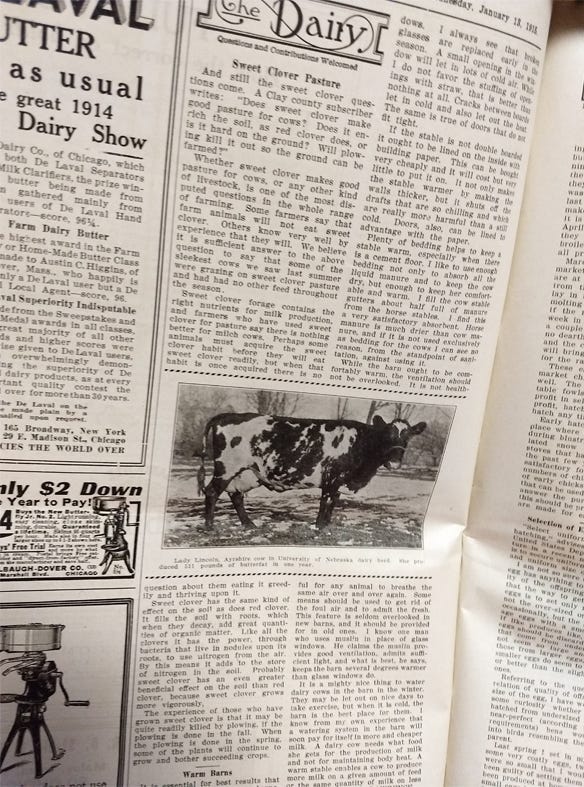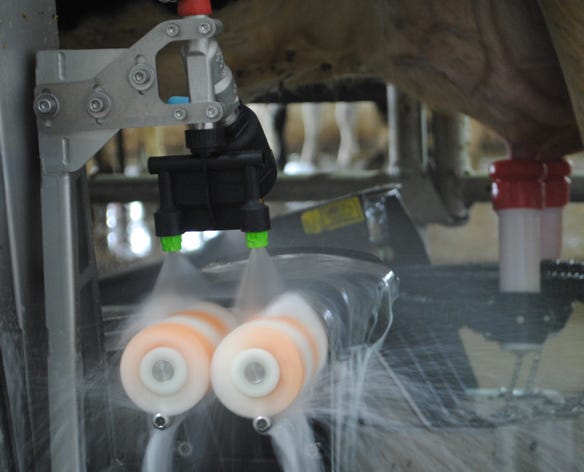June 14, 2021

Editor’s note: In our column Then and Now, we look at farm technologies, strategies, equipment, livestock, crops and treatments from our back issues of Nebraska Farmer, and discuss how things have changed and how they have stayed the same.
Nebraska Farmer has had the pleasure of visiting numerous modern dairy farms in recent years, including robotic dairies and dairies using state-of-the-art systems for manure handling, nutrient recycling, water conservation and, above all, cow comfort.
That’s why it is so interesting to reach back to the Jan. 13, 1915, issue of Nebraska Farmer. Under a photo of Lady Lincoln, an Ayrshire cow in the University of Nebraska dairy herd, and between articles on sweet clover pasture and a cream-grading short course, is an article written by W.J. Lawrence about milk cow housing.
This article, placed next to an ad for International Harvester cream separators, looks at the debate that was raging at the time about whether milk cows produced better if they were housed inside a barn, especially during the winter months.
“Barns can be made comfortably warm with very little expense,” the author notes. “A good place to begin is with the windows,” adding that broken glass should be replaced, and that stuffing window openings or cracks within the barn boards with straw is better than nothing. Lawrence also discusses the benefits of proper bedding, as well as correct ventilation.

COW HOUSING: This 1915 Nebraska Farmer article offers ways for farmers to keep their dairy barns warmer and offer better ventilation for cow comfort — and comfort for farmers working in the barn as well. The goals of animal housing have not changed, but the technologies employed in a modern milk barn have changed considerably over the past century.
The goals of dairy housing have remained the same, but the systems used today on a modern dairy have changed a bit over the past century. Nebraska Farmer talked with Kim Clark, Nebraska dairy Extension educator, about some of the most modern amenities in dairy housing.
“As we look at today’s dairy farms, there are many features and technologies that contribute to cow comfort,” Clark says. “Most cows spend much of their day lying in stalls that are bedded with sand, straw, shavings, mattresses or waterbeds. As the size of the cow increased over the years, the size of the stall also increased to match the size of the cow.”
Curtains are lowered in the winter in many barns to keep barns warmer than the ambient temperature. For summer comfort, barn climate is controlled with fans, sprinkler systems and open-sided barns to keep cows cool.
“There are also footbaths and hoof trimmers, to improve hoof health and reduce lameness,” Clark notes. “Flush systems to clean the alleyways are installed, along with drinking water systems to keep the water fresh and readily available for animals.”

MILKING ROBOTS: With robotic milking becoming more common, cows are trained to enter stalls where they are milked with a robotic system. This is something that probably could not have been imagined by dairy farmers a century ago, although at milking time they may have wished for such a system.
Clark explains that cleaning brushes in modern barns clean the cow and provide a massage. “Feed pushers keep feed fresh at the bunk, along with robotic milkers and automatic calf feeders, are among the technologies used today,” she adds.
Some dairies install activity monitors on the legs of cows or around their neck to monitor activities such as walking, chewing, rumination, and time spent milking and lying, in order to detect changes in health often before any visible symptoms arise.
The focus on good animal housing and husbandry has paid off, along with better quality genetics. According to USDA’s National Agricultural Statistics Service data, the U.S. average milk production per cow in 1934 was 4,033 pounds. By 1950, Clark notes that this had increased to 5,314 pounds. Production had soared to 11,891 pounds by 1980.
But, compare those numbers with the 2020 average production of 23,777 pounds. “There are a number of factors that contribute to annual milk production,” Clark says, “but we can’t forget about the role that cow comfort plays. When a cow is healthy, eating a ration balanced to meet its needs and is comfortable, milk production and quality are greatest.”
While there may have been some debate about milk cow housing in 1915, the proof of success of modern dairy housing and cow comfort systems is in the reduction of health issues in the herd, and the year-over-year increases in overall average milk production.
You May Also Like




